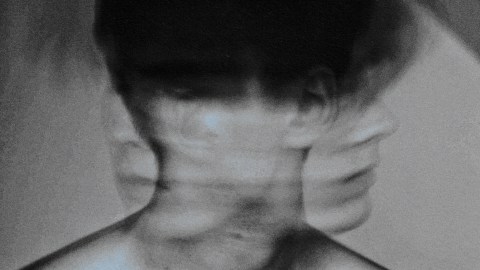What does schizophrenia feel like?

- Our ideas of various mental illnesses often come to us from some representation in books or popular culture. These almost always oversimplify or misrepresent those illnesses.
- Schizophrenia is a complicated condition, which begins in paranoia and ends in hallucinations.
- Understanding schizophrenia can help us to empathize better with those who suffer from it, and to appreciate how all mental health is a spectrum.
All of your ideas come from somewhere. If I asked you to picture a mountain, tree, or planet, the image you would produce is probably one you saw in a book or on a poster. The same applies to mental health conditions like anxiety and depression. Unless you have firsthand experience, odds are that your ideas about those conditions come from books, movies, or conversations with people who have them.
But what about less common mental health conditions, such as dissociative identity disorder or bipolar disorder? We have ideas about what these are like, but it’s often hard to pin down where they came from. Given their relative rarity, there’s a decent chance you’ve never spoken directly to someone who has the condition about what it’s like to live with it. That can leave you with misunderstandings.
One of the most common examples is schizophrenia. Schizophrenics are often portrayed as the most insane of the insane. They’re often conceptualized as psychopathic and violent. If they’re not mocked, they’re to be feared. But what exactly is schizophrenia and what does it feel like to have it?
The first stages
Like any mental health condition, the symptoms of schizophrenia are as varied as the humans that have it, but there are certain things common across all sufferers.
Schizophrenia often starts out similarly to much worse versions of more common conditions, like paranoia and anxiety. The schizophrenic is someone who feels things that they have no rational basis to feel. They get anxious about invented or exaggerated problems or get paranoid about things that seem to wish them harm. At this stage, the schizophrenic’s perception of the world is not entirely inaccurate (they are not hallucinating, for example) but their mind invents worries. They approach the world with a schizophrenic lens: one where everyone is out to get them and where catastrophe is around every corner. It is this paranoia that defines early-stage schizophrenia (in fact, schizophrenia is sometimes called paranoid schizophrenia). As one account puts it:
“I became suspicious and felt as though I was being watched and monitored by everyone—relatives, friends, and even strangers. I thought the security cameras mounted on local buildings were recording my every move. I thought strangers knew who I was and were whispering about me as I walked by.”
Early-stage schizophrenia is really hard to diagnose because the symptoms often resemble other mood disorders. But, of course, things get worse.
What schizophrenia feels like
What characterizes schizophrenia is experiencing hallucinations: perceptions that appear real but are created by the mind. A hallucination seems the same as all other, real, sensory experiences. A lot of schizophrenics, though, will correct their hallucinations by reflecting on them. Encountering an 8-foot-tall bat or a talking tree is at odds with what we know about the world, so many schizophrenics can, and do, say, “This is clearly a hallucination.”
The most common kind of hallucination is auditory: hearing voices. This is how Betty S Ruoss, who has schizophrenia, put it in a 2019 article:
“I was driving home from work one day when I begin to hear voices inside of my head. It wasn’t just one voice talking—it was many in a low tone. I couldn’t distinguish what they were saying. It sounded like a radio between stations, with a lot of static. Time went by, and the voices became clearer.”
These voices will vary massively between schizophrenics. Sometimes the voices can seem positive — they can be funny or even supportive. More often, though, these voices are auditory manifestations of an underlying paranoia or anxiety. As this account puts it, “[The voices] are cutting, demeaning, and seem to have as their goal to defeat me.”
Red-eyed goats and skulls in the wall
At its most advanced (and if left untreated), schizophrenia can lead to visual hallucinations: a stage that is sometimes labeled “psychosis.” As with hearing voices, the content of these hallucinations is hugely variable. For instance, this study recounts a happy case where:
“A Mexican American woman… described how her two deceased sons visited her three to four times a week, in the evening, frequently after the dinner, reassuring her that they were all right and conversing and joking with her. Although the experiences were initially frightening, they became increasingly pleasing.”
At other times, visual hallucinations are terrifying. One comic artist on Reddit recounts the time his schizophrenic wife saw a red-eyed goat. She lay in bed, turned over, and there it was: a horned monster from a horror movie, staring straight at her. Seeing the dead, especially dead loved ones, is very common. So, too, is the macabre, such as seeing skulls in walls or demons floating above your bed.
As with voices, hallucinations are usually pathological representations of underlying anxieties. For instance, one lady who suffered from traffic-related anxiety experienced the following:
“I see someone stepping out on the road in front of my bike, and I run them down. The movie runs constantly, the location of things is very distinct. It is like watching a movie or really seeing an event. I can see the woman I run into, and all the people in the background, all the cars on the other side of the road… I don’t feel I evoke the images. They come by themselves and run by themselves.”
A spectrum to understand
The more you learn about a mental condition, the more you can start to understand it. And the more you can understand it, the more you can empathize with it. Most mental conditions do not exist as a binary but as a spectrum. Almost everyone will be somewhere on the spectrum of mental health. Yes, the medical and psychotherapeutic communities require definitions — they need points on the spectrum to say, “This person is a schizophrenic and this person is not.” But as we have seen, there are degrees of schizophrenia.
It is like schizophrenia is a road, with anxiety and paranoia at the start and red-eyed goats at the end. We all lie somewhere on that road. Appreciating this fact helps to destigmatize and understand schizophrenia (and all mental health conditions) much more.





